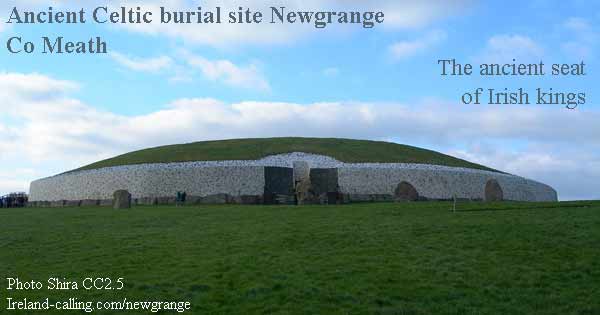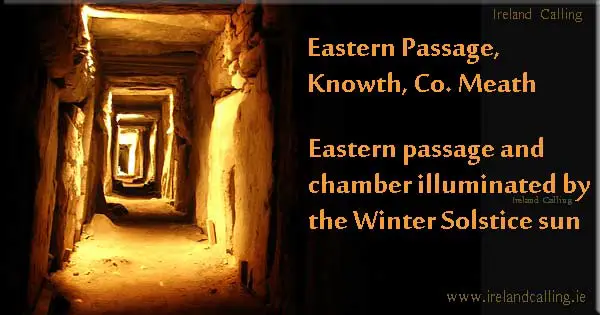Brú na Bóinne is one of the most ancient social and spiritual sites in Ireland. Some of the monuments are 5,000 years old, which means they pre-date Stonehenge in England and the Egyptian pyramids.

It is a World heritage site that contains Neolithic monuments and tombs, built for the leaders of the prehistoric societies. It gets its name from the Irish words meaning ‘Palace of Boyne’ after the River Boyne where it is located.
The graves are at the end of passages and some contain ancient art. The largest of these tombs are Newgrange, Knowth and Dowth.
Only 700 tourists allowed each day
It is not just the ancient monuments that qualify Brú na Bóinne for National Heritage status. The islands in the river are made up of a rare form of alluvial wet woodland and are protected by the EU Habitat Directive.
Brú na Bóinne is in Donore, County Meath and most of the sites are only accessible through guided tours which are available at the visitor centre. Only 700 visitors are allowed at the sites per day and it gets crowded in the summer months so make sure you get there early.
Brú na Bóinne Visitor Centre
The Visitor Centre at Brú na Bóinne is where you need to start to access most of the sites. It’s on the south bank of the River Boyne. The building has been blended into the landscape. To get to the sites you take a shuttle bus over the bridge and then walk.
At the visitor centre you can take part in an interactive exhibition, and there are visual presentations. The exhibition includes a replica of the chamber at Newgrange. The centre has good parking and a nice picnic area. They also provide tourist information, tea rooms and a gift shop.
Newgrange – ancient passage grave
Newgrange is the best known monument at Brú na Bóinne. It is the central mound of the passage grave cemetery. It is famous for its awe inspiring Winter Solstice in which the chamber is lit up by a beam of light as the sun rises.

At the time of the Winter Solstice, (18th-23rd December) the sun rises at such an angle that it sends a beam of light bursting through an opening above the entrance to the mound.
The opening is known as the ‘roof box’ and when the sun beam comes through it travels through the 19 metre passageway into the chamber. As the sun rises, the beam of light coming from the roof box gets bigger and it eventually spreads and lights the entire chamber.
Knowth – biggest collection of megalithic art
Knowth gets its name from the Irish Cnoc Bua or Bui meaning ‘Hill of Bui’. Bui is the name of the ‘hag’ of Beare. According to Irish tradition the hag was associated with death.
The tombs at Brú na Bóinne contain the largest collection of megalithic art in Western Europe. Knowth contains the most art of the three main tombs. The art from the era is in the form of inscribed stones.
Knowth is open from Easter to October 28th and is accessible via the Visitor Centre. There are only 48 people allowed on any one guided tour so get there early to avoid disappointment. The tours last about an hour.
Dowth and the mound that could reach the heavens
Another word for Dowth is ‘Dubad’ or darkness and according to legend this is how it got its name: Dowth was built by Bressal Bodibad, a former king of Ireland. He wanted a mound that could ‘reach the heavens’ and every man in Ireland had to work for one day to build it. His magical sister didn’t think that would be long enough so used her powers to stop the sun going down until the work was done.
However she and the King committed incest and infuriated the gods who took away her powers. The hill became dark and the workers went home.
Tourists can access tombs from visitor centre
The public are able to access the Dowth site directly from the road. However you do not have access to the tombs unless you go via the visitor centre.
On the Winter Solstice you can witness the sun setting alignment at Dowth. You do not need tickets for this and the people are expected to politely take turns to go into the chamber.
Brú na Bóinne is one of the world’s most fascinating and important historical sites and attracts thousands of visitors every year. Just remember to get there early – the places on the guided tours are limited and they fill up fast.